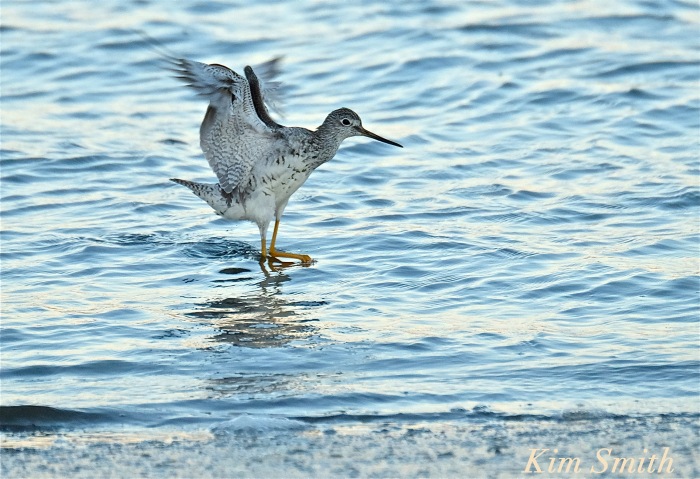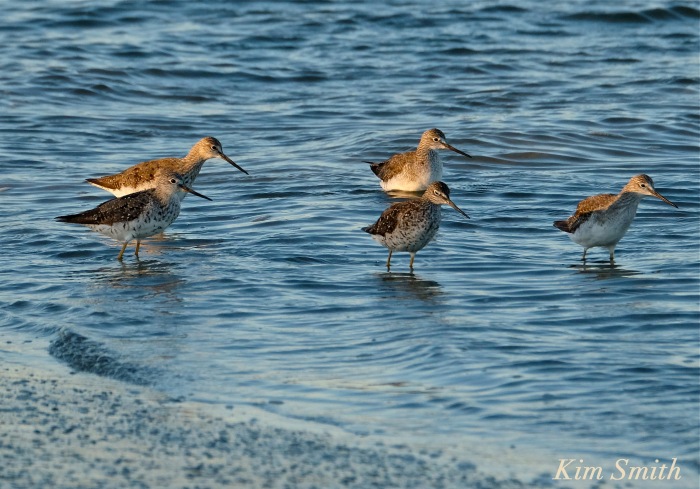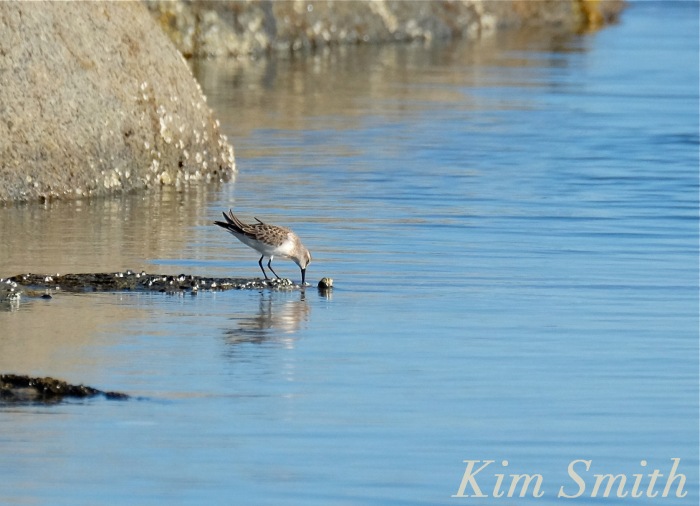Audubon Exclusive through May 7th: Watch ‘Birds of May,’ a New Documentary About Red Knots
The film explores the growing debate over the environmental impact of oyster farms in Delaware Bay, an important stopover site for the threatened shorebirds.
Documentary filmmaker Jared Flesher, “The Red Knot has been on my list since the very beginning,” he says. “As a species, it has all the elements of a dramatic story.” The bird is charismatic and attractive, particularly in its red-breasted summer plumage, and it makes one of the longest annual migrations on Earth, flying up to 9,000 miles each way from the southern tip of South America to the northernmost reaches of the Arctic where the species nests. Every May, as Red Knots make their long trek north, they pause at Delaware Bay in southern New Jersey to refuel, gobbling down the fat-rich horseshoe crab eggs that coat the shore.
At least, that’s what’s supposed to happen. Red Knots already have to overcome numerous challenges on such a long migration, but today they also face new threats. Climate change puts the species’ Arctic nesting sites at risk, and there’s trouble with their main food source at Delaware Bay, where in the early 2000s horseshoe crab over harvesting led to a Red Knot population crash. Since then, the subspecies that migrates through Delaware Bay has been listed under the Endangered Species Act, and the crab harvest has been limited. Red Knots seem to be slowly rebounding, but conservationists are worried that the population is still fragile.
As a storyteller, a species disappearing from earth forever—that’s just about the most dramatic hook there is,” Flesher says. And as he explores in Birds of May, which was partly funded by the Washington Crossing Audubon Society, a new threat may be lurking for the far-flying birds at their New Jersey stopover site.”
See the trailer below and watch the film exclusively at Audubon here only through May 7th.
Don’t miss Deborah Cramer speaking about the making of her book about the Red Knots “The Narrow Edge,” at the Sawyer Free Library on Thursday evening at 7pm.
On the sandy beaches of the Delaware Bay, in New Jersey, a visitor arrives each May from the southernmost tip of South America. Name: Calidris canutus rufa. The rufa red knot.
What makes the red knot remarkable is its epic journey: 19,000 miles per year, from Tierra del Fuego to the Arctic Circle and back again, one of the longest migrations in the animal kingdom.
The Delaware Bay serves as the most important stepping stone during the red knot’s long spring migration. Famished knots, having flown without rest for as many as seven days straight, arrive on the bay having lost half their body weight. For two crucial weeks, the birds gorge on the eggs of horseshoe crabs. Red knots that gain enough weight will survive the final leg of their journey to the Arctic. Others perish.
In 2015, the U.S. Fish & Wildlife Service listed the rufa red knot as a federally threatened species—it faces threats throughout the Western Hemisphere, from habitat loss in South America to the impacts of climate change in the Arctic. The calamitous overharvest of horseshoe crabs on the Delaware Bay last decade was another major driver of the red knot’s decline—when the starving birds arrived, there weren’t enough eggs waiting for them.
Most recently, in 2016, state and federal regulators approved a plan to permit a 1,400 percent increase in oyster farming on the Delaware Bay. The oyster farms operate on the same tidal flats used by hungry red knots at low tide.
Birds of May, filmed in May 2016 on the beaches of the Delaware Bay, is filmmaker Jared Flesher’s ode to the natural spectacle of the red knot’s annual visit. It’s also an investigation of potential new threats to red knot survival. Not everyone is sure that expanded oyster farming and red knots can happily coexist. Against the scenic backdrop of the bay, Flesher interviews both oyster farmers and the shorebird biologists who fear that an oyster farming boom here could push the rufa red knot closer to extinction.
Read more about filmmaker Jared Flesher here:
A tiny shorebird inspires N.J. filmmaker and a flock of poets












